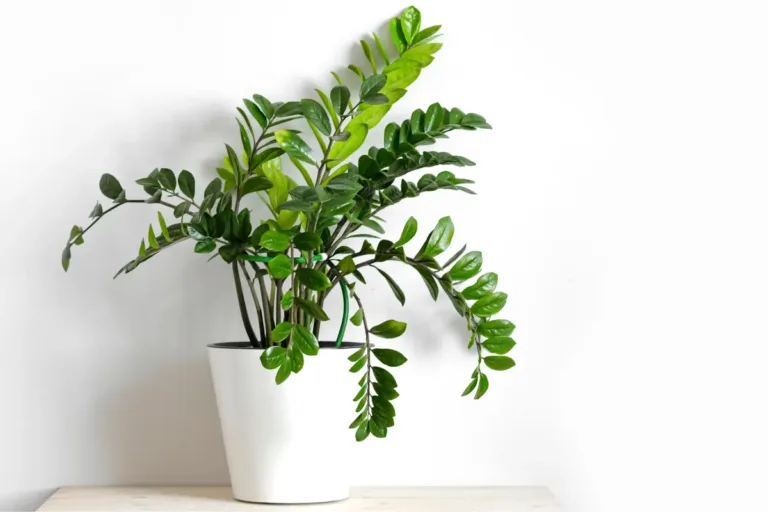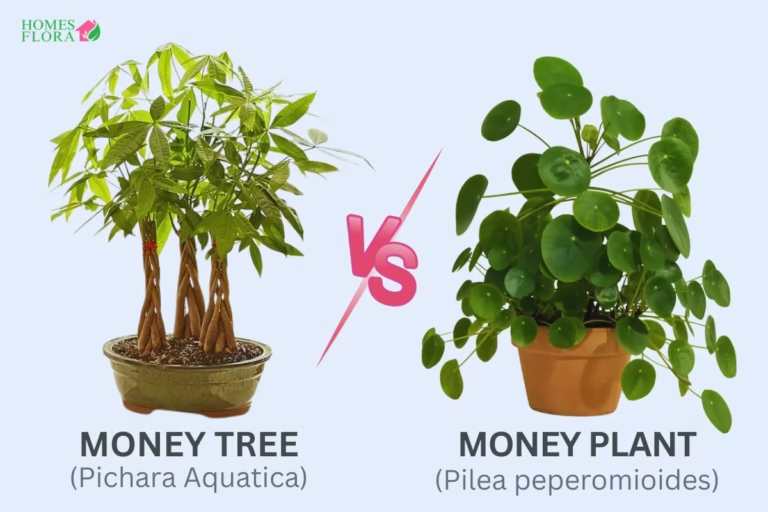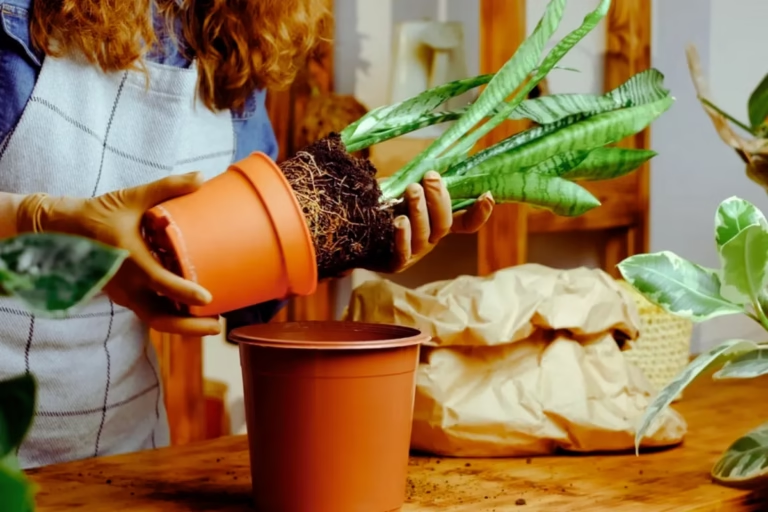Lily vs. Calla Lily: Key Differences and Similarities Guide
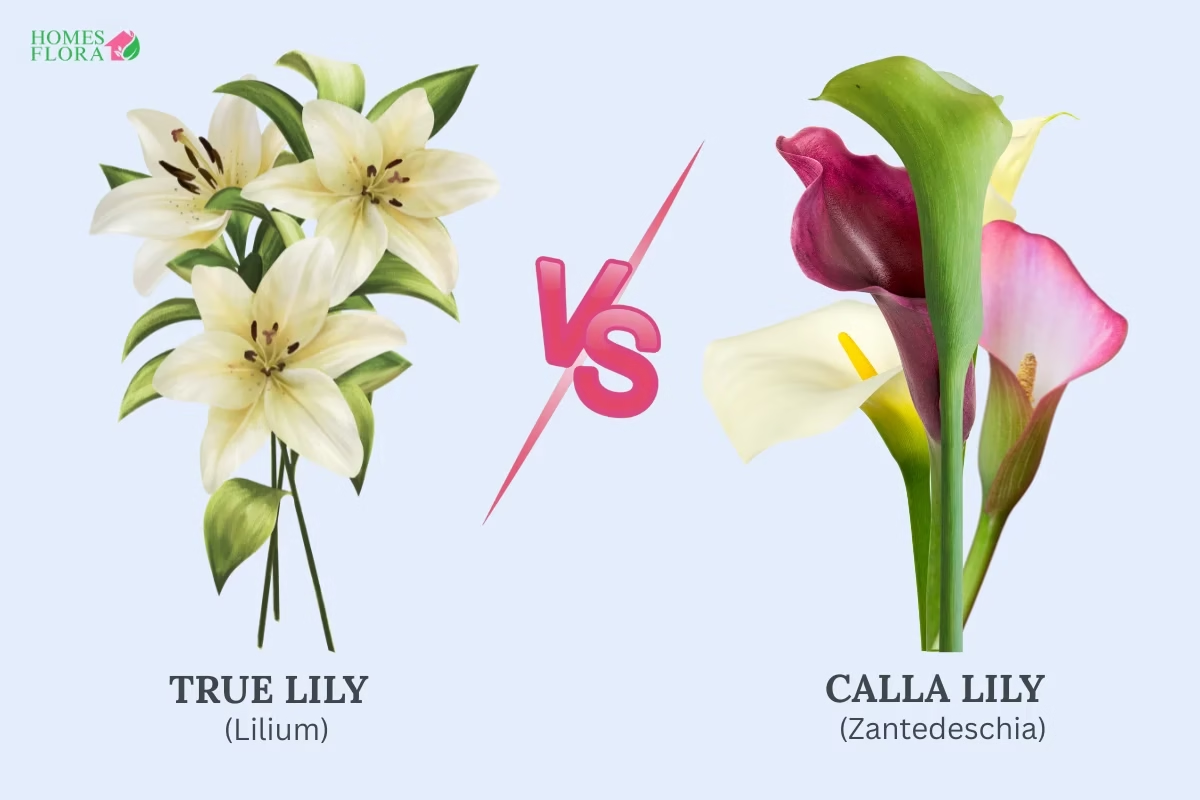
Did you know that the classic Lily and the elegant Calla Lily aren’t even related? It surprises many gardeners — they share a name, but they come from completely different plant families and grow in totally different ways. If you’ve ever stood in a garden center scratching your head at the labels, you’re definitely not alone. It’s easy to confuse them when you see those gorgeous blooms side by side.
But here’s the good news: once you know what makes a true Lily different from a Calla Lily, choosing the right one for your garden (or your favorite vase) is a breeze. In this friendly guide, you’ll find out exactly what sets them apart, how to grow and care for each, and how to pick the one that fits your space, style, and climate best. Ready to find your perfect match? Let’s dig in!
Lily vs Calla Lily: What’s the Difference?
Calla Lilies and True Lilies (such as Asiatic and Oriental varieties) both are beloved for their elegant blooms, differ significantly in appearance, care, and classification. Below is a quick comparison table to help you easily identify the key differences.
Feature | Lily (Lilium) | Calla Lily (Zantedeschia) |
|---|---|---|
Family | Liliaceae | Araceae |
Growth | Bulbs | Rhizomes |
Flower Shape | Trumpet or star | Funnel/spathe |
Bloom Time | Early–mid summer | Late spring–summer |
Fragrance | Often fragrant | Mild or no scent |
Hardiness | Zones 4–9 | Zones 8–10 |
Use | Beds, bouquets | Pots, weddings |
As you can see, these plants only share a name — their growth habits, appearance, and care needs are surprisingly different.
What Is a True Lily?
A true Lily belongs to the genus Lilium. These iconic flowers are known for their tall stems, trumpet-shaped blooms, and sweet fragrance. Most Lilies grow from bulbs and bloom in early to midsummer. Popular varieties include Asiatic, Oriental, and Trumpet Lilies.
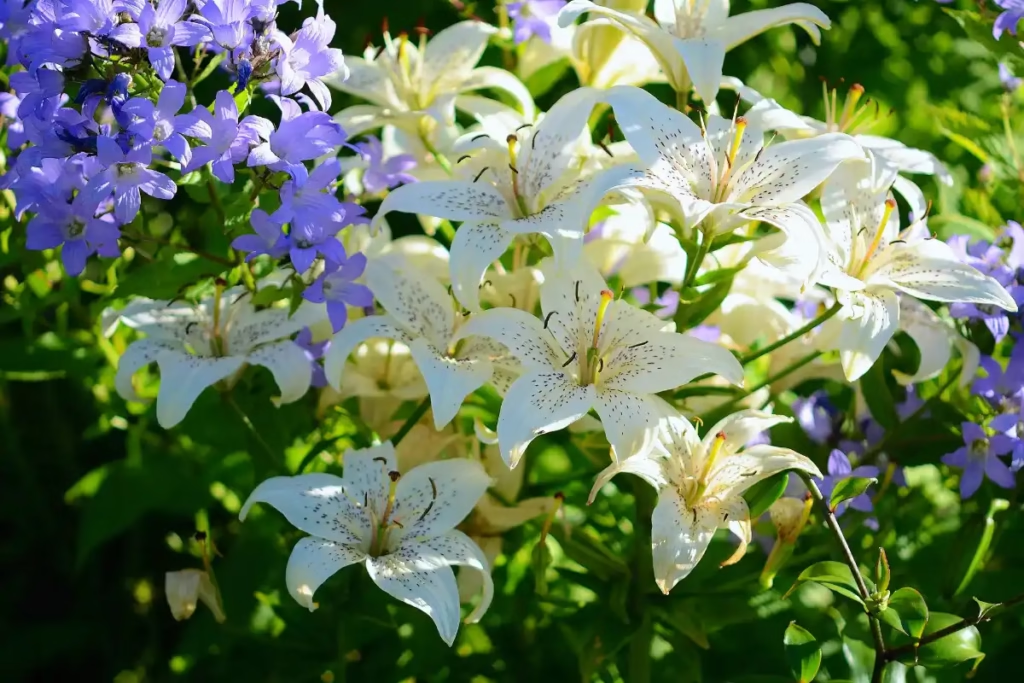
Here’s what makes a Lily a true Lily:
- Genus: Lilium
- Flowers: Large, showy, often fragrant
- Growth: Bulbous perennial
- Hardiness: Most are hardy in USDA zones 4–9
- Common colors: White, pink, orange, yellow, red
Lilies are beloved for dramatic displays in garden beds and stunning cut flowers in summer bouquets.
How Do You Care for True Lilies?
To care for true Lilies, plant bulbs in well-drained soil and full sun — at least 6 hours daily. Water deeply once a week and mulch to keep roots cool. Plant bulbs 6–8 inches deep and stake tall stems if needed. Remove faded flowers to help bulbs store energy for next year’s blooms. True Lilies come back every summer when kept healthy.
What Is a Calla Lily?
A Calla Lily, despite its name, isn’t a true Lily. It’s part of the Zantedeschia genus, which belongs to the Arum family. Calla Lilies grow from rhizomes and produce striking, funnel-shaped flowers called spathes surrounding a yellow spadix.
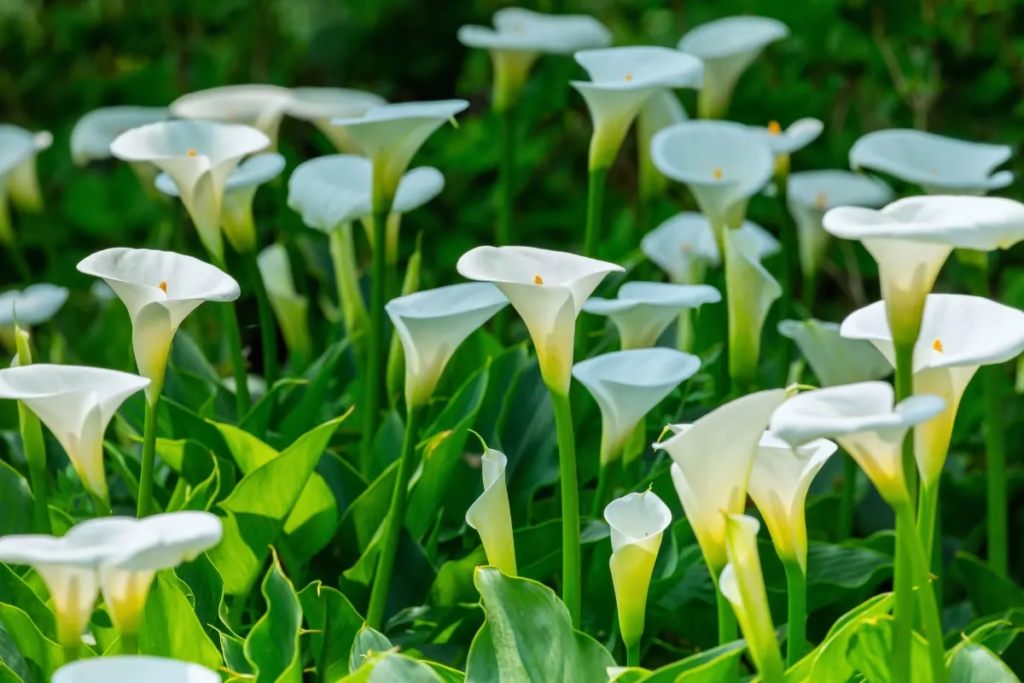
Key traits of Calla Lilies:
- Genus: Zantedeschia
- Flowers: Elegant, cup-shaped spathes
- Growth: Rhizomatous perennial
- Hardiness: Hardy in USDA zones 8–10; grown as annuals or houseplants in cooler zones
- Common colors: White, pink, purple, yellow, deep red.
They’re popular in wedding arrangements and containers because of their sleek, sculptural look.
How Do You Care for Calla Lilies?
To care for Calla Lilies, plant them in partial shade outdoors or bright, indirect light indoors. Use rich, well-draining soil and keep it consistently moist but not soggy. Plant rhizomes 3–4 inches deep, smooth side up. Fertilize lightly during bloom season. In cold climates, dig up rhizomes before frost and store them dry until spring. Calla Lilies reward you with striking blooms when kept warm and well-watered.
How to Grow Lilies Successfully
Lilies thrive when you match them with the right spot, soil, and seasonal care. Here’s how to grow true Lilies like a pro gardener:
Choose the right spot:
Lilies love full sun — aim for at least 6–8 hours daily. A spot with morning sun and afternoon shade can help blooms last longer in very hot climates. Always choose well-drained soil; soggy soil will rot the bulbs fast. Raised beds or mounded soil help if your garden stays wet.
Plant at the right depth:
Plant Lily bulbs 6–8 inches deep, pointy side up. Space them about 8–12 inches apart to give each stem room to breathe and prevent fungal problems. Plant in early fall for summer blooms — or very early spring if winters are harsh.
Water and mulch:
Water deeply once a week so roots grow strong. Let the top inch of soil dry out before watering again — Lilies don’t like wet feet. Add 2–3 inches of organic mulch to hold moisture, regulate temperature, and keep weeds away.
Stake tall varieties:
Oriental and Trumpet Lilies can grow 4–6 feet tall — a strong wind can snap them. Stake tall stems early so you don’t damage roots later. Use soft ties to avoid bruising the stems.
Deadhead spent flowers:
Snip off faded blooms as soon as they wilt. This keeps plants looking neat and stops them from putting energy into seed pods. Leave stems and leaves intact until they turn brown naturally — they feed the bulb for next year.
Bonus tip: After a few years, clumps may get crowded. Dig up and divide bulbs every 3–4 years in fall to keep plants blooming strong.
Lilies reward you with stunning flowers year after year when you feed, water, and divide them with care.
How to Grow Calla Lilies at Home
Calla Lilies are just as easy to grow but have slightly different needs. Here’s how to help them thrive indoors or in your garden:
Pick the right container or bed:
Callas do beautifully in pots, borders, or around water features. They prefer partial shade outdoors — especially in hot, sunny climates. Too much direct sun can scorch their leaves and fade blooms.
Plant shallowly:
Plant Calla Lily rhizomes about 3–4 inches deep with the smooth side up and the growing points facing up. In pots, leave 1–2 inches of space below the rim for watering. Space them about 12 inches apart in garden beds so they have room to spread.
Keep soil moist but not soggy:
Callas like consistently moist soil while growing and blooming, but they hate sitting in water. Use rich, loose, well-draining soil. If growing in pots, make sure there’s a drainage hole — no exceptions!
Fertilize lightly:
Feed Calla Lilies with a balanced, slow-release fertilizer once a month during their active growth and bloom season. Avoid heavy feeding — too much nitrogen can encourage leaves but few flowers.
Dig up or overwinter:
In zones colder than USDA 8, Calla Lilies can’t survive frost outdoors. Before the first freeze, dig up rhizomes gently, shake off soil, and let them dry for a few days. Store them in paper bags or boxes filled with dry peat moss in a cool, dark place until spring.
Bonus tip: If you’re growing Callas as houseplants, give them a “rest period” after blooming by letting the foliage die back naturally. Stop watering for a few weeks so the rhizome recharges for next year.
Calla Lilies add a touch of tropical elegance indoors or out when you keep their soil moist, give them gentle shade, and store them properly over winter.
Related Guide: Ranunculus vs Peony: Differences, Similarities, & More
Why Are Lilies and Calla Lilies Popular?
Both flowers hold deep cultural and symbolic meanings.
Lilies symbolize purity and rebirth — you’ll often see white Lilies at weddings and funerals. The Easter Lily is especially famous in Christian traditions.
Calla Lilies, with their sculptural form, symbolize elegance and beauty. They’re a top choice for bridal bouquets and modern floral arrangements.
In short: both bring dramatic beauty, but in different styles.
How Long Do Lilies vs Calla Lilies Bloom?
Knowing when your Lilies or Calla Lilies bloom — and how long they last — helps you plan a garden that stays colorful for weeks.
Lilies blooming Period
Most true Lilies bloom for about 2 to 4 weeks during early to midsummer, depending on the type and climate. Asiatic Lilies often bloom first (late spring to early summer), followed by Oriental and Trumpet Lilies (mid to late summer). By planting a mix of early, mid, and late-blooming varieties, you can enjoy continuous Lily blooms for up to 2 months.
Calla Lilies bloom time
Calla Lilies usually bloom a bit longer than true Lilies. Expect your Callas to flower for about 6 to 8 weeks, typically from late spring through midsummer. With ideal warmth, moisture, and light feeding, they’ll keep producing fresh spathes for several weeks. In warm climates or indoors, some gardeners even get them to bloom twice in a season with proper rest periods.
Bloom Boost Tip:
To get the longest life from cut Lilies or Callas in a vase, harvest flowers early in the morning when buds are just starting to open. Use a clean, sharp knife and place stems immediately in cool water. Remove spent flowers quickly to encourage new buds to open.
By choosing different varieties and caring for them well, you can enjoy colorful Lily and Calla Lily blooms from late spring right through the heart of summer.
Lily vs Calla Lily Bloom Time Comparison
Flower Type | Typical Bloom Time | Bloom Duration | Extra Notes |
|---|---|---|---|
Asiatic Lily | Late spring – Early summer | 2–3 weeks | Earliest to bloom, unscented |
Oriental Lily | Midsummer – Late summer | 3–4 weeks | Large, fragrant flowers |
Trumpet Lily | Midsummer | 2–4 weeks | Tall, dramatic, strong scent |
Calla Lily | Late spring – Midsummer | 6–8 weeks | Can bloom longer indoors or in warm climates |
Pro Tip: By mixing Asiatic, Oriental, and Trumpet Lilies in your garden, you can stagger flowering from late spring well into late summer — adding Calla Lilies extends the show even longer, especially in containers or shady spots!
How Much Water Do Lilies vs Calla Lilies Need?
Water is crucial — but the needs vary.
Lilies:
Water deeply once a week. Let soil dry slightly between waterings to prevent bulb rot.
Calla Lilies:
Keep soil consistently moist but never waterlogged. They dislike drying out during bloom time.
Adding mulch around both helps regulate moisture and temperature.
Are True Lilies or Calla Lilies Toxic to Pets?
This one’s important: true Lilies are highly toxic to cats. Even licking pollen can cause kidney failure. Keep them out of reach or choose a safer alternative.
Calla Lilies are also toxic but usually less deadly. They contain calcium oxalate crystals that irritate mouths and throats if chewed.
If you have curious pets, be cautious with both.
Lily or Calla Lily: Which Should You Choose?
So, Lily vs Calla Lily — which one wins?
Pick Lilies if you want:
- Classic, fragrant blooms
- Taller, dramatic garden displays
- Hardy perennials that naturalize
Pick Calla Lilies if you want:
- Sleek, modern elegance
- Beautiful potted displays
- Easy indoor or outdoor summer blooms
Your choice depends on your style, space, and climate. Some gardeners even plant both for a double dose of beauty!
Other Calla Lilies Comparisons:
Madonna Lily vs. Calla Lily: Explore key differences in appearance, symbolism, and growing conditions.
Calla Lily vs. Canna Lily: Compare their blooms, size, and care needs to choose the best tropical flower for your garden.
Peace Lily vs. Calla Lily: Discover how these popular flowering plants differ in care, bloom style, and indoor appeal.
Bring Lilies or Calla Lilies Into Your Life
Whether you’re drawn to the timeless charm of true Lilies or the sculptural beauty of Calla Lilies, you really can’t go wrong. Both brighten your garden or home in their own unique ways.
Ready to pick your favorite? Head to your local nursery, grab a few bulbs or rhizomes, and get planting. And don’t forget — share your blooms with us in the comments below, subscribe for more plant care tips, and pass this guide on to a friend who loves flowers too!

